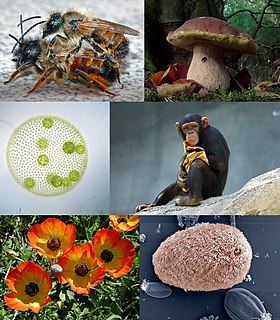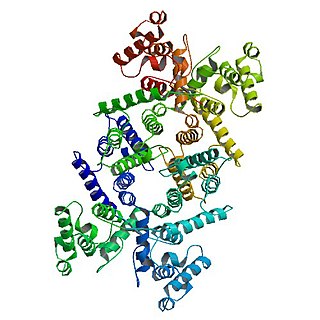Acyl-coA acyltransferase-related enzyme 2 required for viability is a protein that in humans is encoded by the ARV1 gene. It is involved in lipid trafficking. ARV1 is ubiquitously expressed in higher eukaryotes, and in Saccharomyces cerevisiae yeast, is required for viability. Arv1-/- knockout mice display a phenotype with reduced white adipose and favorable blood lipid profiles on a chow diet. [5] ARV1 is hypothesized to be involved in neurodevelopment, as a splice variant of ARV1 with a 40 amino acid truncation causes epileptic encephalopathy in infants.d [6] Arv1-/- mice corroborate this observation. [6] In yeast knockouts, supplanting human ARV1 through plasmid transfection rescues cells from death. [7]

Proteins are large biomolecules, or macromolecules, consisting of one or more long chains of amino acid residues. Proteins perform a vast array of functions within organisms, including catalysing metabolic reactions, DNA replication, responding to stimuli, providing structure to cells and organisms, and transporting molecules from one location to another. Proteins differ from one another primarily in their sequence of amino acids, which is dictated by the nucleotide sequence of their genes, and which usually results in protein folding into a specific three-dimensional structure that determines its activity.

In biology, a gene is a sequence of nucleotides in DNA or RNA that codes for a molecule that has a function. During gene expression, the DNA is first copied into RNA. The RNA can be directly functional or be the intermediate template for a protein that performs a function. The transmission of genes to an organism's offspring is the basis of the inheritance of phenotypic trait. These genes make up different DNA sequences called genotypes. Genotypes along with environmental and developmental factors determine what the phenotypes will be. Most biological traits are under the influence of polygenes as well as gene–environment interactions. Some genetic traits are instantly visible, such as eye color or number of limbs, and some are not, such as blood type, risk for specific diseases, or the thousands of basic biochemical processes that constitute life.

Eukaryotes are organisms whose cells have a nucleus enclosed within membranes, unlike prokaryotes, which have no membrane-bound organelles. Eukaryotes belong to the domain Eukaryota or Eukarya. Their name comes from the Greek εὖ and κάρυον. Eukaryotic cells also contain other membrane-bound organelles such as mitochondria and the Golgi apparatus, and in addition, some cells of plants and algae contain chloroplasts. Unlike unicellular archaea and bacteria, eukaryotes may also be multicellular and include organisms consisting of many cell types forming different kinds of tissue. Animals and plants are the most familiar eukaryotes.

















